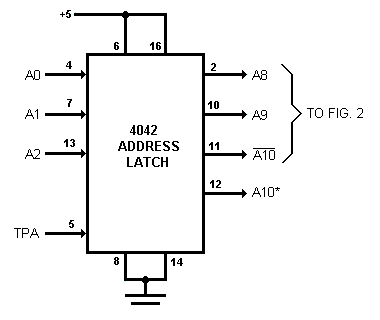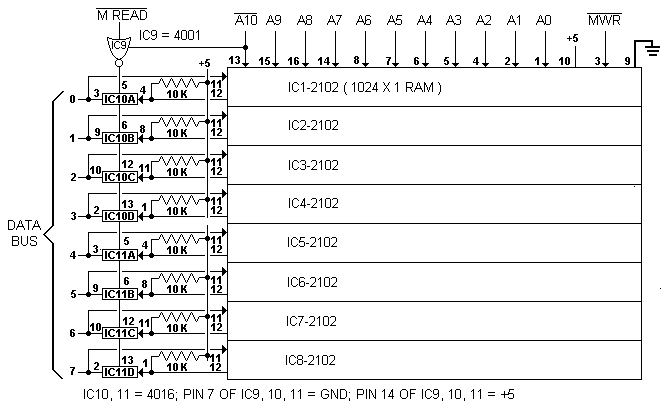
Fig. 1. Address latch. *Connect pin 19 of original 2101 RAM's to A10 instead of ground.
ing either ETOPS or EHOPS: This program continuously counts up at a rate determined by the byte at M(5E). Be sure to start execution at M(50).
PROGRAM 4
*C0 F8 F0 AA RA.0=F0
C3 F8 08 A8 R8.0=08
C6 D5 5A BSUB, MA=D
C8 1A 28 A+1, R8-1
CA 88 3A C6 M(C6) if R8.0 != 00
*CD F8 F0 AA RA.0=F0
D0 F8 08 A8 R8.0=08
D3 EA F0 A7 R7.0=MA
D6 64 28 Show MA, A+1, 8-1
D8 F8 FF AC RC.0=FF
D8 7B 87 Q=1, D=R7,0
DD FF 01 D-01
DF 3A DD M(DD) if D != 00
E1 7A 87 Q=0, D=R7.0
E3 FF 01 D-01
E5 3A E3 M(E3) if D != 00
E7 2C 8C RC-1
E9 3A DB M(DB) if RC.0 != 00
EB 88 3A D3 M(D3) if R8.0 != 00
EE 30 CD M(CD) if R8.0=00
F0-F7 = Table of tone values
Program 4 should be loaded and run using EHOPS. You should also have a speaker attached to the Q line. Start this program at M(C0) with EHOPS. You can then enter eight bytes via the hex keyboard. These bytes should have values between 02 and 7F for best results. Each byte represents the frequency of a tone you will hear via the speaker. After you enter the eighth byte you'll hear the eight-tone sequence repeated over and over. You can restart the program at M(CD) to hear a previously entered tone sequence.

PROGRAM 5
0000 F8 00 B1 R1.1=00
03 F8 FF A1 R1.0 = work
06 F8 00 51 M1=00
09 E1 64 21 Show M1
0C F0 FC 01 51 M1+1
10 F8 10 B2 R2.1 = delay
13 22 R2-1
14 92 3A 13 M(13) if R2.1 != 00
17 30 09 Repeat M(09)
An operating system can be designed to incorporate any desired feature. For example, you might want to examine the contents of internal 1802 registers or control the operation of a cassette recorder. As more features are needed, [66]

[63]
[64]
[65]
[66]
[67]
[Part 1]
[Part 2]
[Part 3]
[Part 4]
65 MARCH 1977